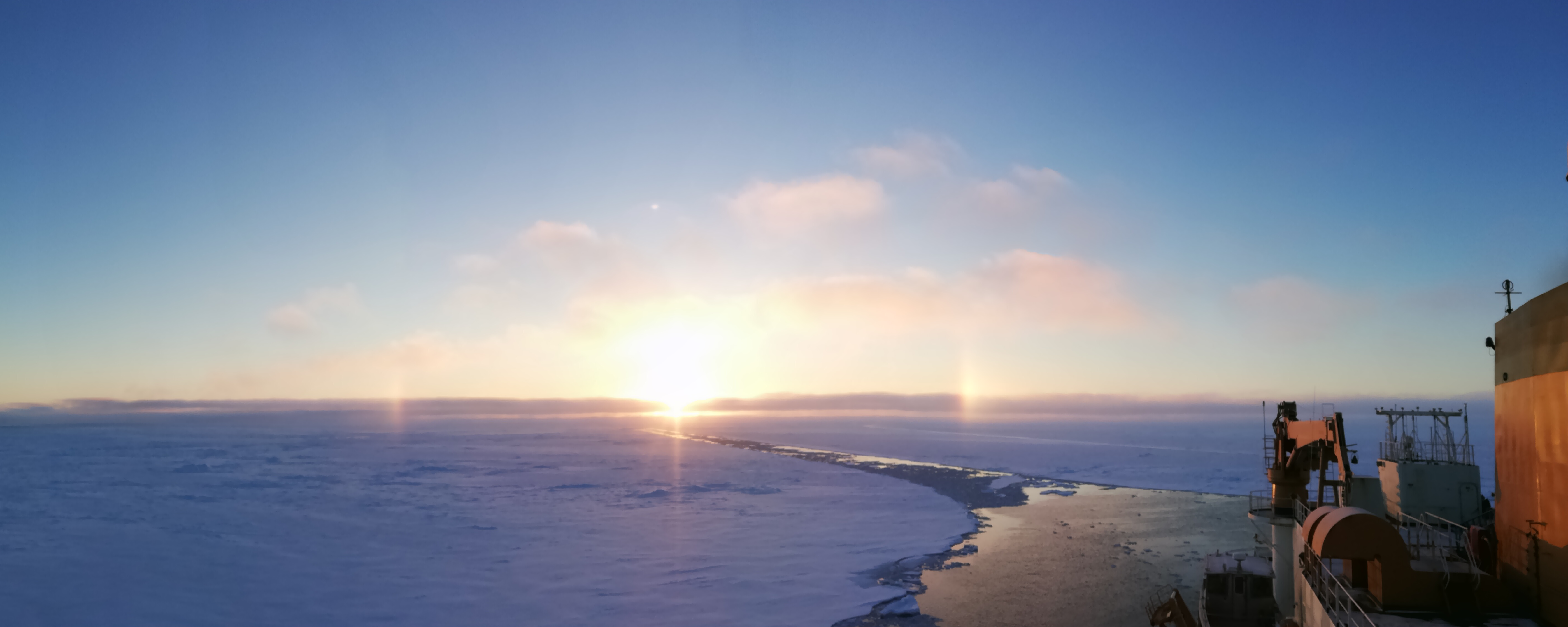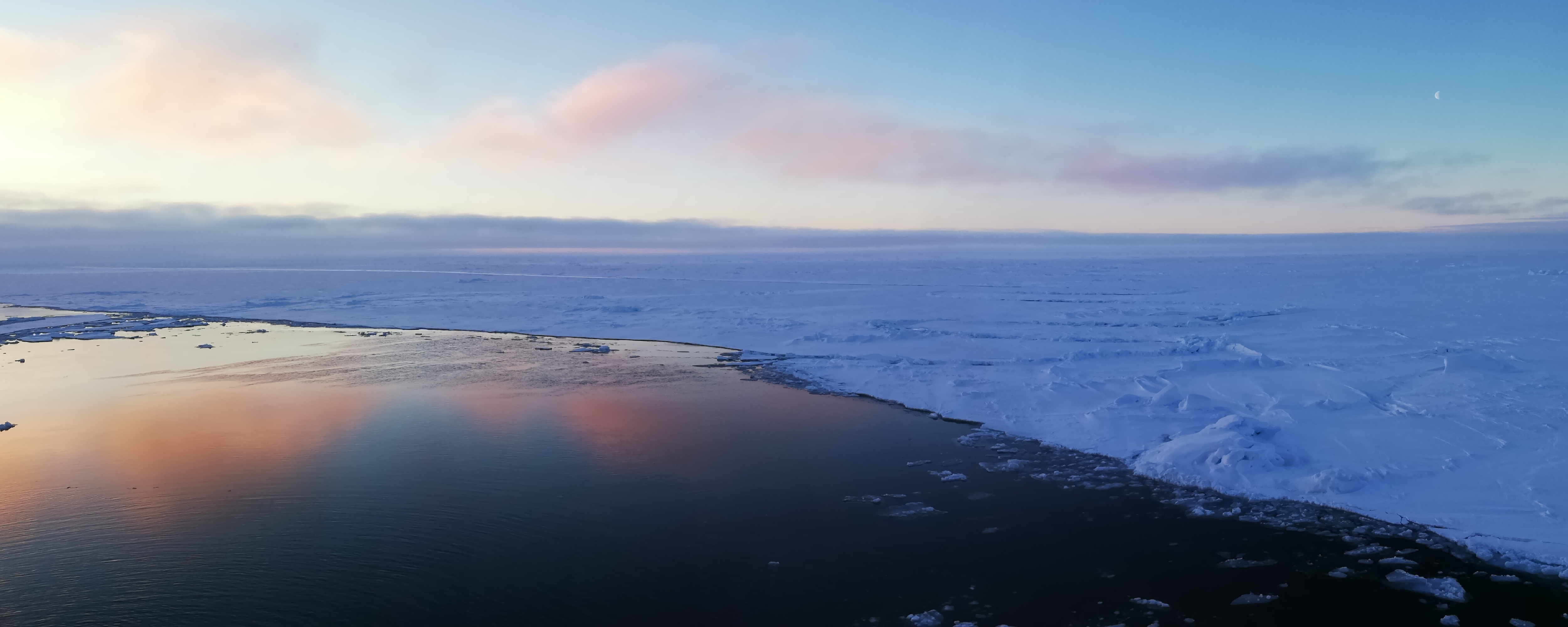Mukund Gupta
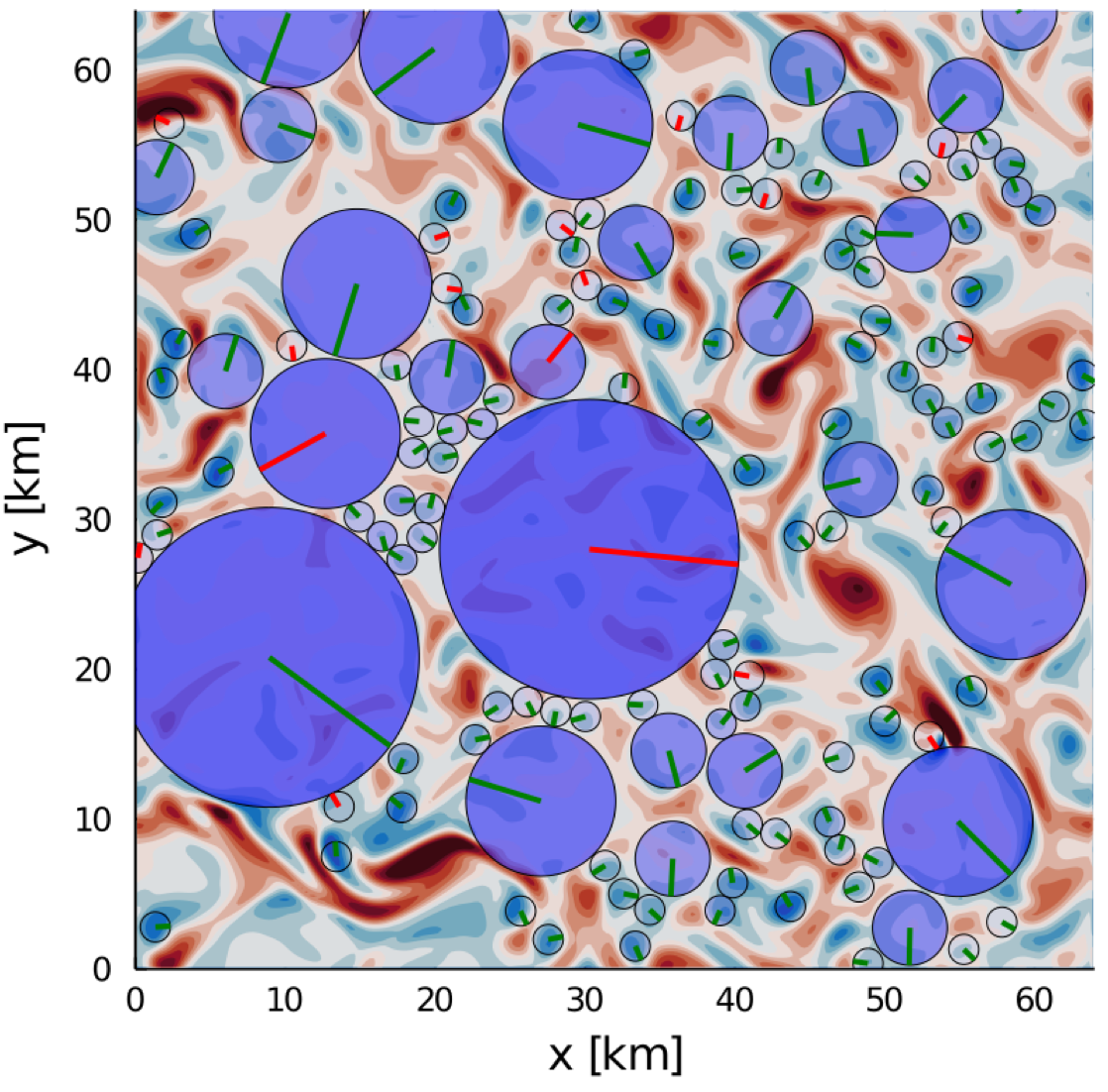
Upper ocean interactions with sea ice floes
At the poles, the summer marginal ice zone is often composed of individual ice floes whose scale lateral may range between 1m - 50 km. As these floes melt, they produce fresh water fronts that can lead to flow instabilities and the enhancement of their melting rates. This work simulates these upper ocean interactions by developing a new model of sea-ice floes coupled with an interactive ocean. Results show a strong dependence of the behavior of ice floes on their size, spatial distribution and environmental conditions. View a sample animation here.
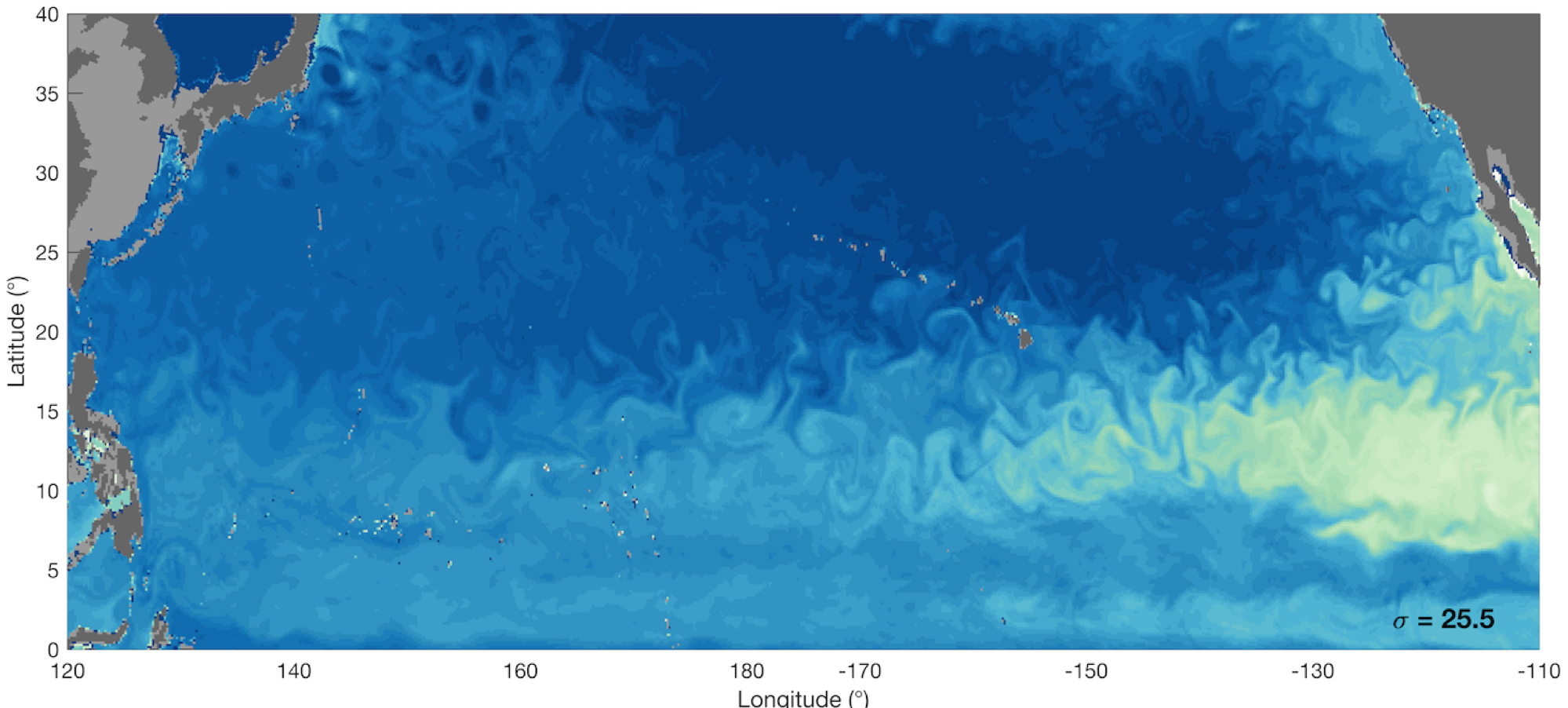
Nutrient fluxes in the Pacific ocean
Biological activity in the northern subtropical Pacific ocean is strongly limited by the lack of nutrient availability within the gyre. Using the high-resolution global ECCO-Darwin model output, this work investigates the lateral supply of primary nutrients into the euphotic zone by the action of eddy stirring. A novel methodology is developed to diagnoze the nutrient budget in an isopycnal framework, allowing the diagnosis of eddy/mean processes.
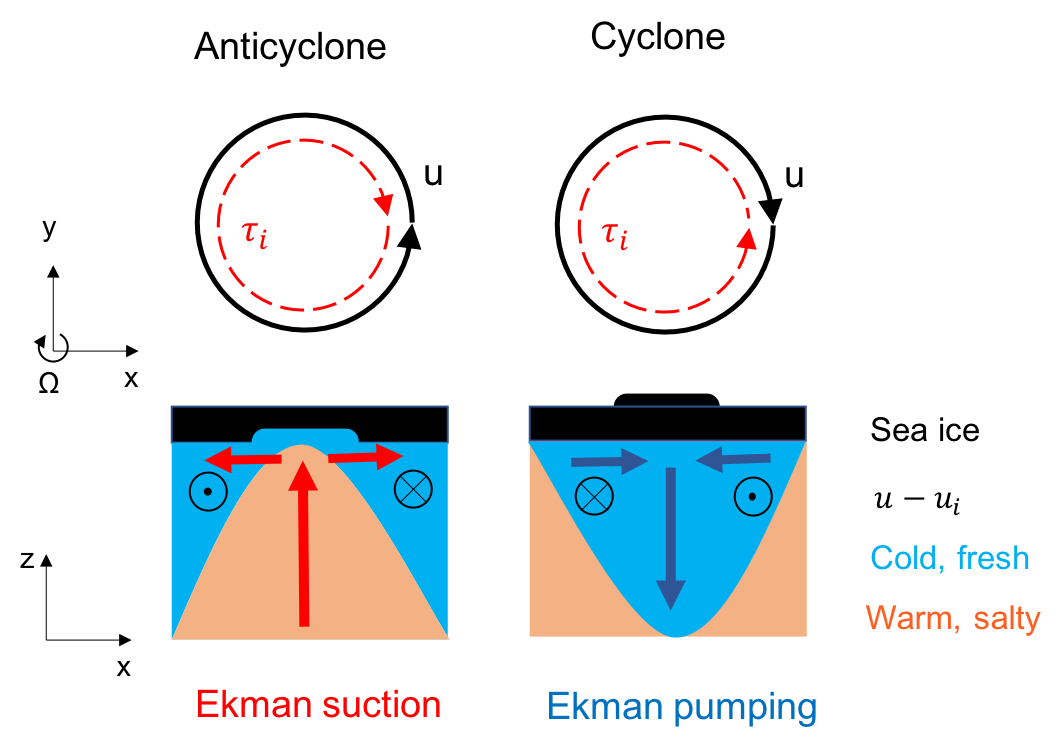
Effect of sea ice on eddies around Antarctica
In regions of compact sea ice around Antarctica, there is a significant amount of friction between underlying ocean surface eddies and the base of the ice. This study unconvers a novel mechanism by which Ekman pumping/suction associated with eddying ice/ocean stress provides a rectified heat flux to the base of the ice and contributes to its melting during the Fall and Winter seasons.
Relevant publication: Gupta et al. (2020)

Carbon fluxes in the Southern Ocean
The air-sea exchanges of carbon that occur in the Southern ocean (around Antartica) are of particular importance for past, present and future climate. Using a high resolution channel model, we investigate the competition between the ventilation and light limitation effects of sea ice on the net carbon exchange in the Southern ocean. We find that light limitation can significantly counter the reduced carbon ventilation caused by sea ice.
Relevant publication: Gupta et al. (2020)
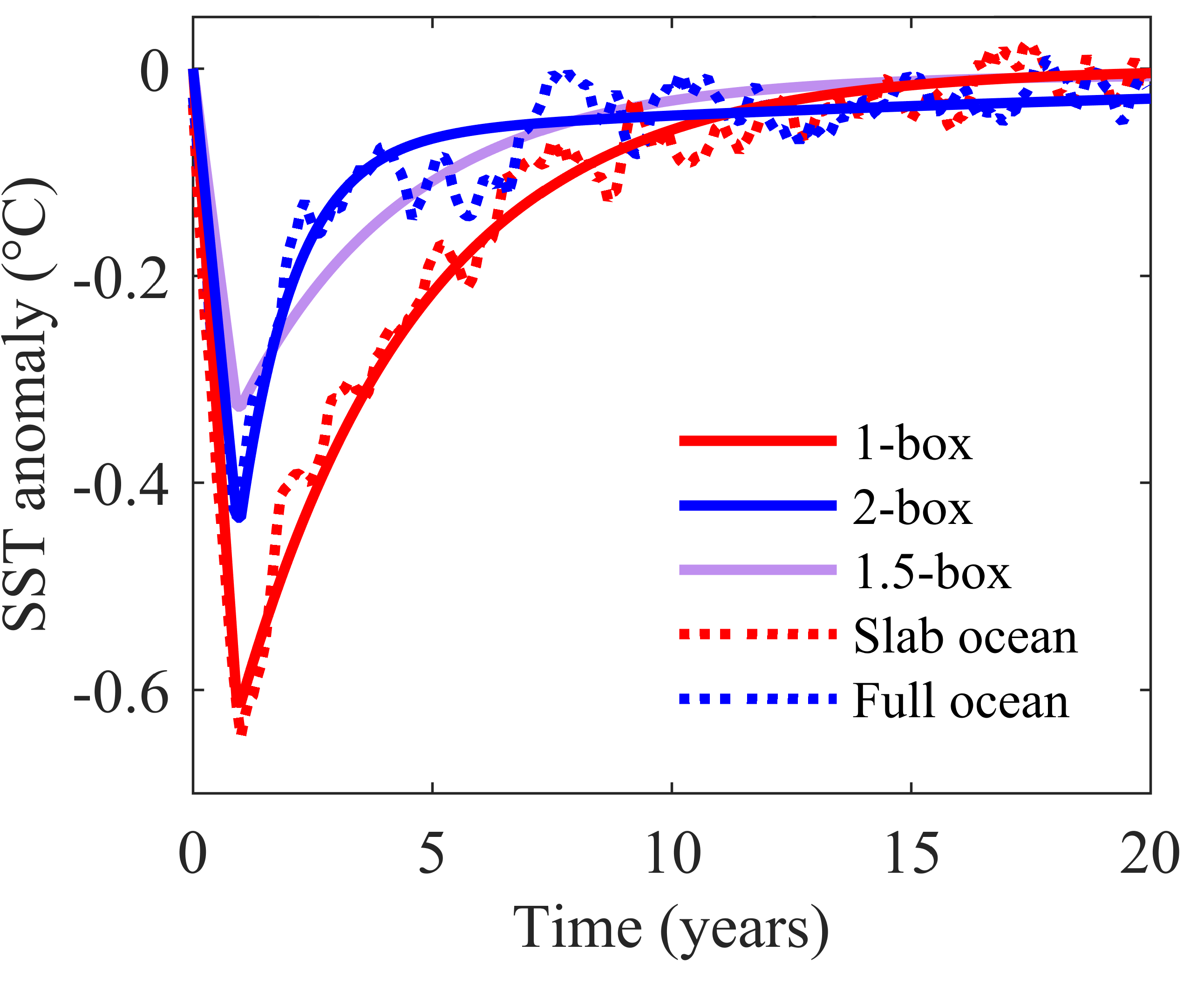
Climate sensitivity
The climate sensitivity represents the degree to which the Earth's temperature is affected by changes in its radiative budget. Both atmopsheric feedbacks and ocean heat uptake play a role in the equilibration process following a radiative perturbation. This works makes use of the Earth's temperature response to volcanic eruptions to separate those two contributions.
Relevant publication: Gupta & Marshall (2018)
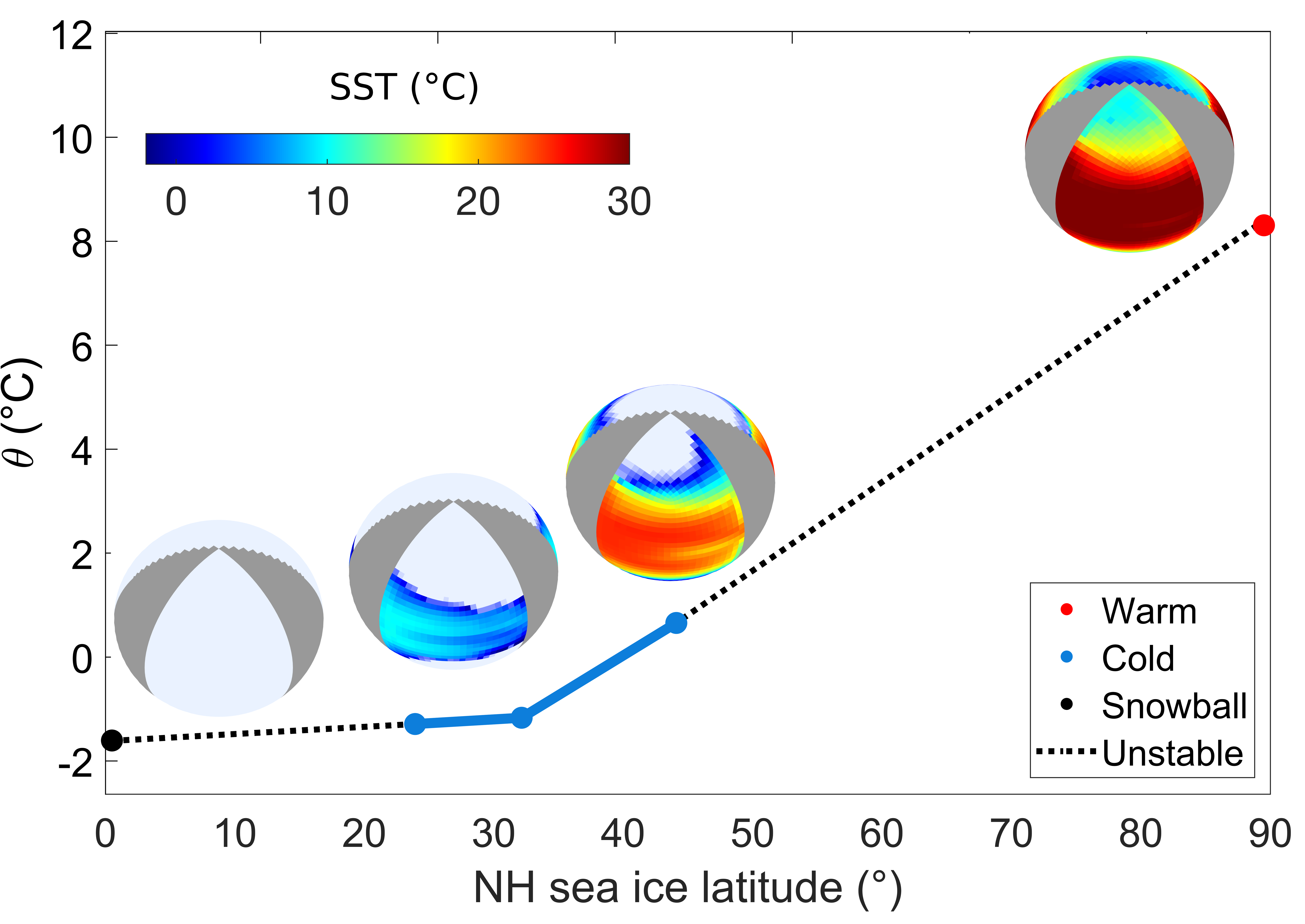
Multiple climate equilibria
The climate of the Earth has undergone significant shifts throughout Earth's history, ranging from hothouse worlds to possibly a complete Snowball. This suggests that the climate may be interpreted as a dynamical system with multiple stable states with potential tipping points between then. We have investigated the possibilty for such bifurcations to be initiated by sequences of large volcanic events.
Relevant publication: Gupta et al. (2019)
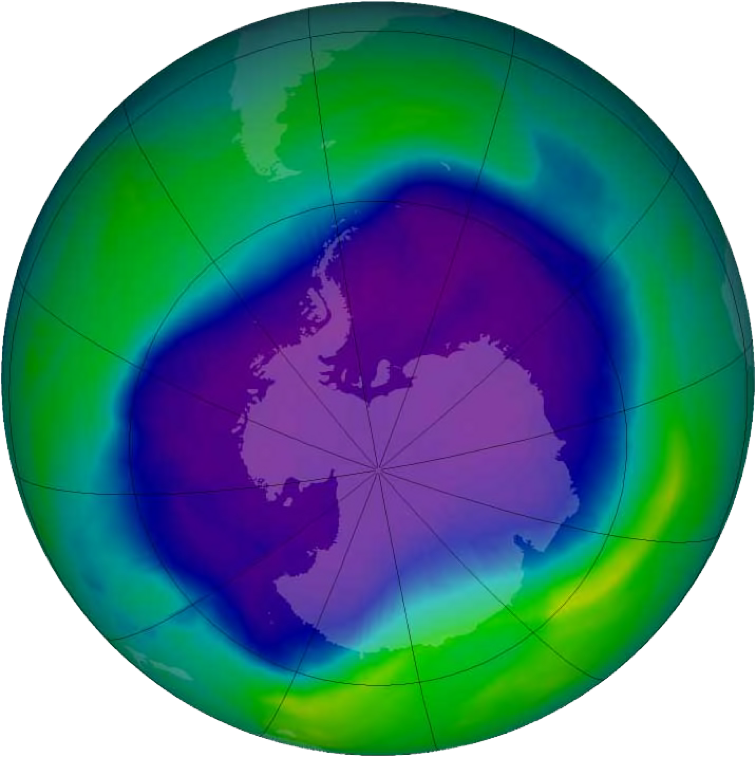
Recovery of the Antarctic ozone hole
As part of a side project with Prof. Susan Solomon, I worked on understanding the mechanisms behind the recovery of the Antarctic ozone hole. Our results suggest that dynamics, chemistry, and radiation are all important to interpret the observed temperature and ozone trends.
Relevant publication: Solomon et al. (2017)
© Copyright 2022 Mukund Gupta
